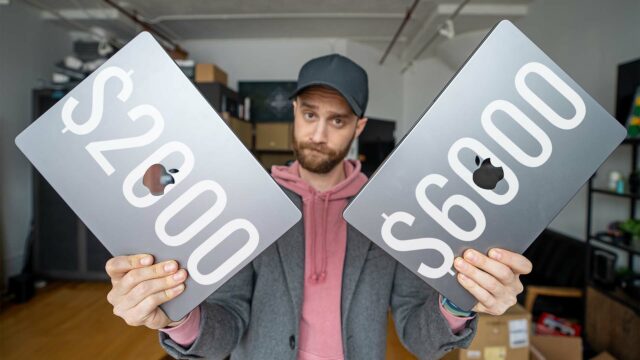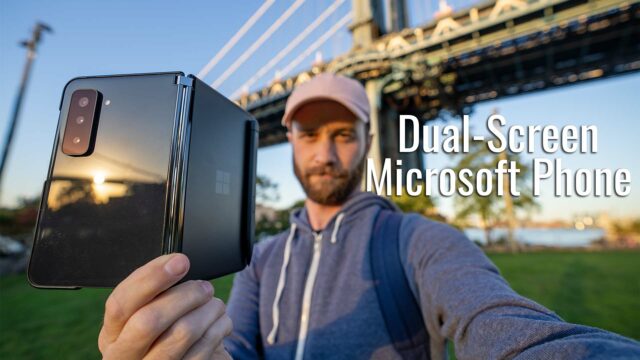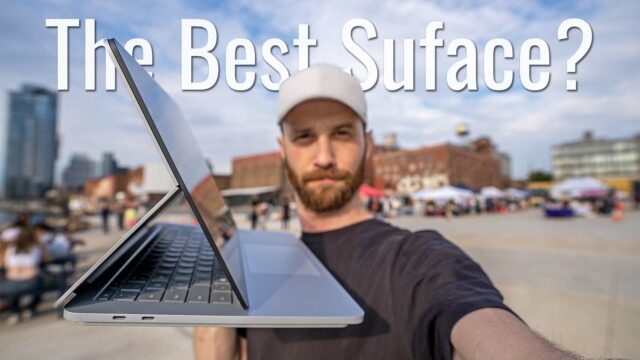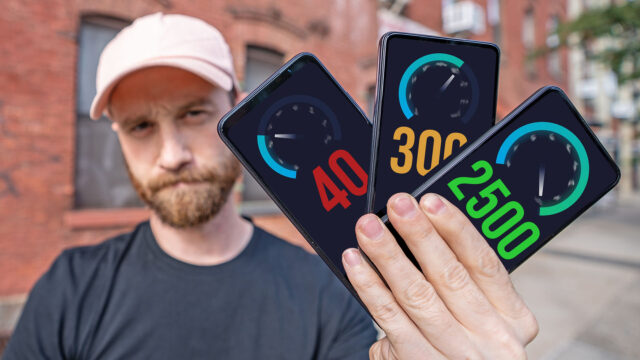Surface Go Complete Walkthrough
Microsoft just released the Surface Go, their latest new product in the Surface lineup, and they were kind enough to let me check it out. As is the usual here, that means I’m going to try and do my complete walkthrough on it. If you aren’t familiar, a complete walkthrough is where I try and go through every feature on the device so you guys are better prepared should you be interested in maybe buying one.
With that said, let’s get started with the design.
Design
There’s no other way to put this. It’s a baby Surface Pro. It has the same magnesium casing as the other Surface 2-in-1’s and can be attached to a Type Cover (although it’s a specific one for the Surface Go because of its smaller size). And it is small. The device has a 10″ 1800×1200 3:2 aspect ratio touchscreen.
Wait, let’s get it out of the way. The bezels. Sure, they look like they’re from a much older device in today’s age of near bezel-less laptops, but Microsoft had an explanation for them. Which was that the bottom bezel had to be of a certain size to accommodate the magnetic keyboard while still providing enough surface area to physically hold the device up again the hinge and keyboard angles. And the top bezel is because of the stuff to handle the front camera and all the components to use Windows Hello (of which the device is capable and can unlock using your face like other Windows Hello laptops, by the way). And that by that, the sides had to be a certain size to account for the aspect ratio and to have a place to hold the device without touching the screen.
You can decide for yourselves what you think of their explanation, but because of the price I personally could care less about the bezels, but we’ll get to that in a second.
As mentioned, there is Windows Hello hardware above the screen including a 5MP camera that can do 1080P video for conference calls.
Hidden in the bezels on either side are stereo Dolby Audio speakers.
For ports, we have a 3.5mm headphone jack, the proprietary Surface charger port, the magnetic connector for the Type Cover, a MicroSD card slot under the stand, and a USB-C port that is also capable of being used to charge the laptop which makes it able to work off of portable battery packs like you use for your phone, for example.
Also, since this device is all about portability with a name like “Go”, I think we need to mention that the charging brick, which can sometimes add a significant amount of weight to what you carry around with your ultraportable laptop is tiny and light (weighing only X lbs) and even has retractable outlet prongs which make it less likely to scratch other things in your bag while trekking around (gotta appreciate the little things sometimes).
On the back of the device, we have our infinitely positionable hinge that can go back to the same degree basically as the Surface Pro. We have our rear-facing 8MP camera also capable of 1080P video.
And at the top of the device, we have our power button and volume buttons.
We have to talk about the keyboard really quick too, as even though it’s an optional accessory technically, I can’t recommend getting a Surface Go without it.
The keyboard comes in the black version for $99 or one of the colored Alcantara Signature versions for $129.
The keys have a decent amount of travel, are backlit, and we have a glass trackpad that is a precision trackpad, meaning it is more precise, can use Windows gestures, and is just better than not being one. Trust me. It also has a mechanical click mechanism, which I appreciate.
Now the keyboard is specific to the Surface Go, you can’t use it on your Surface Pro and vise verse. This is due to the size of the keyboard which is slightly squished in order to fit the 10″ device. This size also means the keys are squished horizontally and it takes some getting used to but I got used to it easily within a day.
Finally, the device only weighs 1.15 lbs and with the keyboard, it’s about 2.5 lbs which is still very light and still deserving of the Go moniker, I think.
Surface Go Specs
Under the hood, we have an Intel Pentium Gold 4415Y processor paired with the Intel HD Graphics 615. You can get it in two varieties, one with 4GBs of RAM and 64GBs of eMMC storage, or 8GBs of RAM and a 128GB SSD.
Battery-wise we have a 21.6wH battery as per iFixIt’s teardown, which is positively tiny (the 2018 iPad is a 32.6wH to put it into perspective). But, honestly, having been using it for a little under a week now, I can say I have no complaints about battery life (but keep in mind I usually use a high-performance Razer Blade 15 that can’t last a few hours under load).
Now, with those configurations, it is, of course, not a powerful machine. It’s obviously meant to be used to browse the web, use the Office suite, and values portability over power.
For the software, we’re running Windows 10 in S-Mode (the new name for Windows 10 S), which supposedly increases battery life, performance, and security but you can only use apps from the Windows app store and since that is pretty limited and a lot of us have a applications that aren’t in the app store we use on a daily basis, you might want to upgrade it to Windows 10 Home when you get it. Thankfully though, you can do so easily by just clicking a few buttons in the settings (this is a one-way upgrade on all laptops, by the way, but if you need it, you’re not looking back anyway).
As far as bloatware, there are the usual Windows 10 included-whether-you-want-them-or-not games basically, but you can easily uninstall them if you want.
Now, for anyone wondering, here are a few scores on some of the more popular benchmarking apps:
- Cloud Gate: 4117
- Geekbench 4 CPU Single Core: 1902
- Geekbench 4 CPU Multi-Core: 3814
- Geekbench 4 OpenCL: 16124
Conclusion
The biggest thing about this laptop though, in my opinion, is the fact that it is a Surface product from Microsoft that is in a product category previously untouched by them. The Surface line is becoming more and more popular, thanks in a big part to the attention to detail, decent specs, hardware materials, and styling and it’s nice to finally have an option in this price range in an inexpensive portable 2-in-1.
How inexpensive? It starts at $399 for the 4GB/64GB model. Now, that doesn’t include the Type Pad which, as I mentioned, is another $99 for the black one or $129 for the colored Alcantara fabrics. And, frankly, I think you sort of need a keyboard for this to be a viable device so let’s say it’s $499. Now, the 8GB/128GB model is $549 making the total with the keyboard $649.
But $499 and $649 are still pretty damn good for a full blown computer of this type. You know, one that can use that obscure printing software at your office that no other OS can use for whatever reason, full versions of Photoshop and Lightroom (so long as you’re not going crazy with the number of layers), a real web browser, etc. You can even add $99 to get the Surface Pen that works with it as well or the new $30 Surface Mobile mouse (or any other Bluetooth mouse for that matter).
Now, I still need to run some tests on the device and use it more regularly before I can say exactly how good it is, but I can say that because of the price, portability, fact it runs full-blown Windows, when someone asks me for what laptop they should get to just use for travel, web surfing, etc. I will now at least have them take a look at the Surface Go instead of just telling them to go get a Chromebook.
Let me know what you guys think of the Surface Go in the comments below!





























